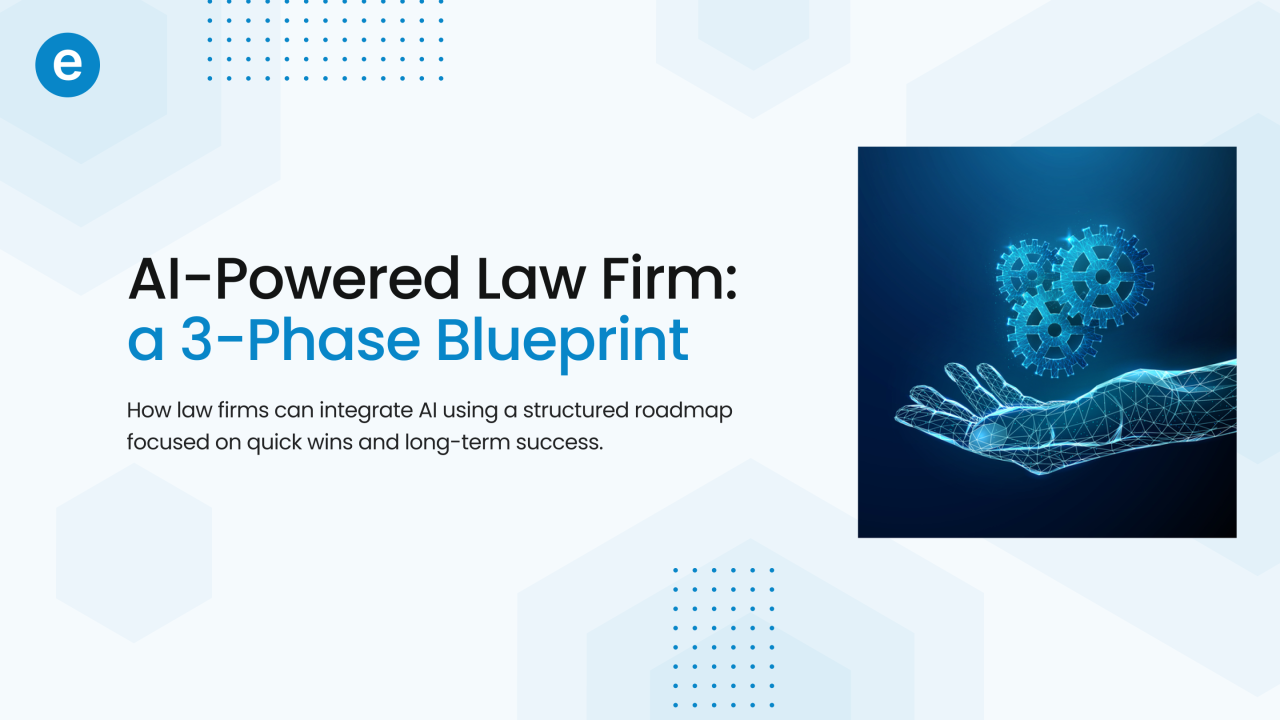Strategic AI Integration Plan for Law Firms
Disclaimer: The author of this post is not a legal professional. The primary intention of this content is to provide a framework for contemplating the adoption of AI in a legal setting. It’s challenging to predict the exact efficiency and productivity improvements AI can offer. The “Benefit” percentages cited within this article are based on AI predictions and should, therefore, be interpreted with some degree of skepticism.
Adopting AI in a law firm requires a thoughtful, phased approach to ensure effective implementation and optimal use of resources. Before outlining the details of the strategic plan, it is important to establish common definitions for several key terms that will be referenced throughout this document:
Here’s an outline for a three-phase strategy:
Phase 1: No-Code, Low-Code, and Rapid Adoption
Phase 2: Medium Difficulty
Phase 3: Robust IT Infrastructure and Consideration of Total Cost of Ownership (TOC)
Actions:
This strategic plan provides a roadmap for law firms to gradually and effectively integrate AI into their practices, ensuring that each phase builds upon the last and lays the foundation for more advanced applications, aligning with the firm’s growth and evolving technological landscape.
Overarching AI Solution Considerations
Tasks and AI Role
Efficient Case Research
AI Integration Strategy:
Overall Impact:
Effective Client Communication
AI Integration Strategy:
Overall Impact:
Advanced Litigation Technology Utilization
AI Integration Strategy:
Overall Impact:
Efficient Time Management
AI Integration Strategy:
Overall Impact:
Building a Stronger Client Base
AI Integration Strategy:
Overall Impact:
Enhancing Team Collaboration
AI Integration Strategy:
Overall Impact:
Effective Case Management Systems
AI Integration Strategy:
Overall Impact:
Legal Writing and Documentation
AI Integration Strategy:
Overall Impact:
Networking and Professional Relationships
AI Integration Strategy:
Overall Impact:
Client Retention Strategies
AI Integration Strategy:
Overall Impact:
Managing Legal Documents Efficiently
AI Integration Strategy:
Overall Impact:
A Blueprint for Law Firms to Adopt AI
We propose a three phased approach (a 12 week plan). This allows for iterative discovery, piloting, customization and gradual integration of AI systems across the firm based on priority use cases and feedback. The phased timeline balances short term wins with long term success.
1. AI Discovery Phase (Weeks 1-4)
This phase focuses on building foundations – assembling a team, aligning on goals, researching AI solutions, piloting no-code tools and gathering initial user feedback.
2. Early Adoption Phase (Weeks 5-8)
This phase scales the initial from no-code to low-code AI tools across the firm through change management and training. It also researches more advanced AI applications and builds business cases.
3. Advanced Implementation Phase (Weeks 9-12)
This phase leverages learnings from early phases to implement customized, advanced AI capabilities through integrations, testing and training.
Here is a 12 week AI discovery and implementation journey plan based on the provided strategic integration plan:
Week 1:
Week 2:
Week 3:
Week 4:
Weeks 5-6:
Weeks 7-8:
Weeks 9-10:
Weeks 11-12:
AI Integration for Other Types of Law Firms
While our focus in this post is on litigation-focused law firms, AI integration strategies can be tailored to suit various types of law firms with differing workflows and needs. The “bot-interaction” lens (Bot-Human, Bot-External App, Bot-Dataset) remains a useful framework across these diverse legal practices. Here’s how it can be adapted:
For Firms with Simpler Workflows (e.g., Small Practices, Boutique Firms)
For Firms with More Complex Workflows (e.g., Large Corporate Firms, Specialized Practices)
For All Law Firms
Conclusion
A thoughtful integration of AI can transform legal workflows, enhance efficiency, and improve client service. However, to maximize its effectiveness, law firms must take a phased approach that builds capabilities over time. This plan provides a blueprint for incremental adoption of AI across critical use cases—from early wins with no-code tools to long-term investments in advanced technologies.
At its core, integrating AI requires focusing on users. This means gathering continuous feedback through each phase to ensure user adoption and business value. With proper change management and training, firms can adopt AI. The 12 week roadmap accelerates this process through rapid piloting and iteration.
By following this strategic framework, law firms can benefit from AI. The rise of artificial intelligence is inevitable across the legal sector. Firms that lead this shift will gain a distinct competitive advantage in the marketplace. With the right strategy and execution, AI can take legal work to the next level. Start your journey today.
How can we help?
We can get on a call, understand your specific use cases and propose a Proof of Concept deployment that will get you started quickly.

